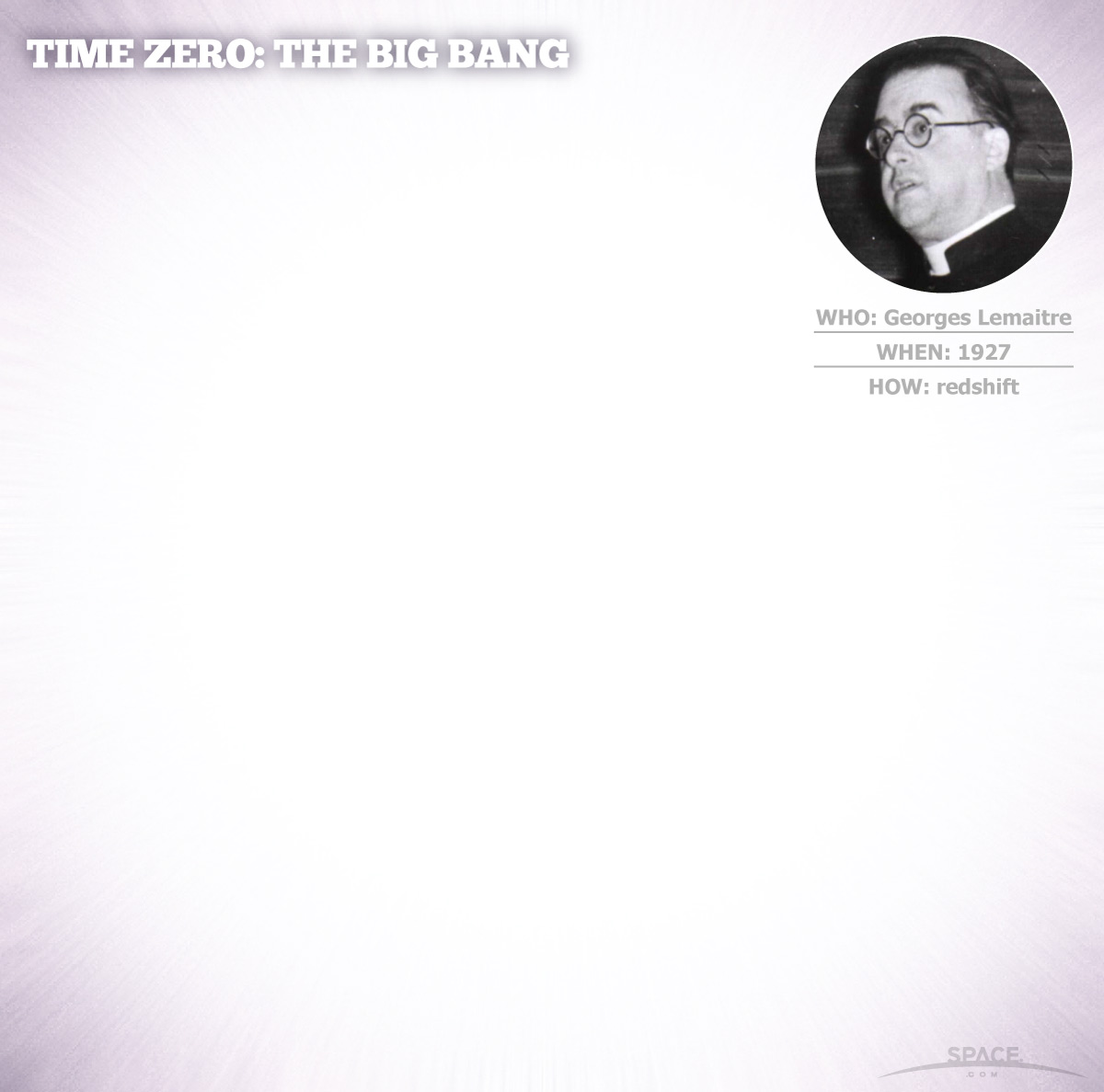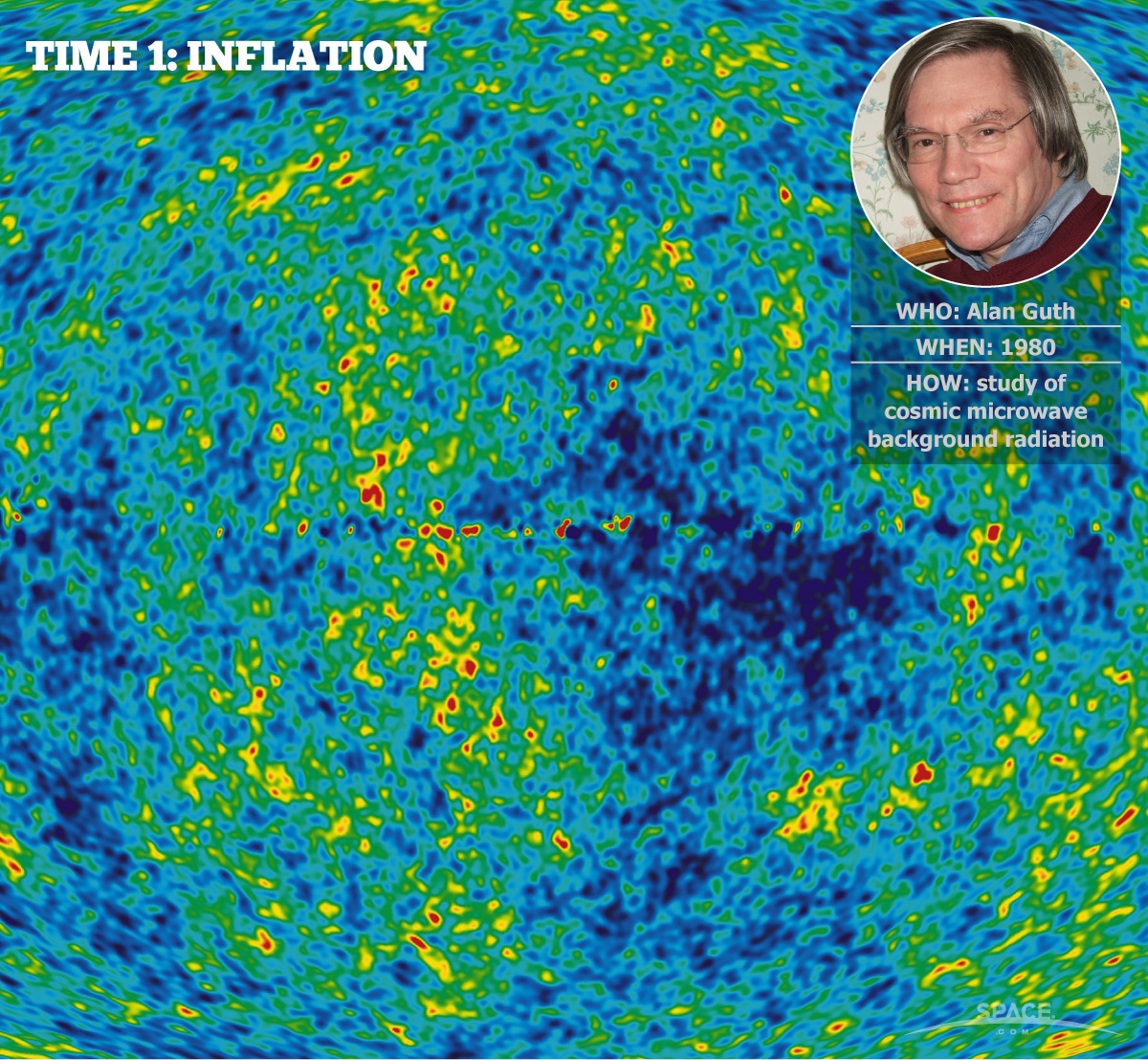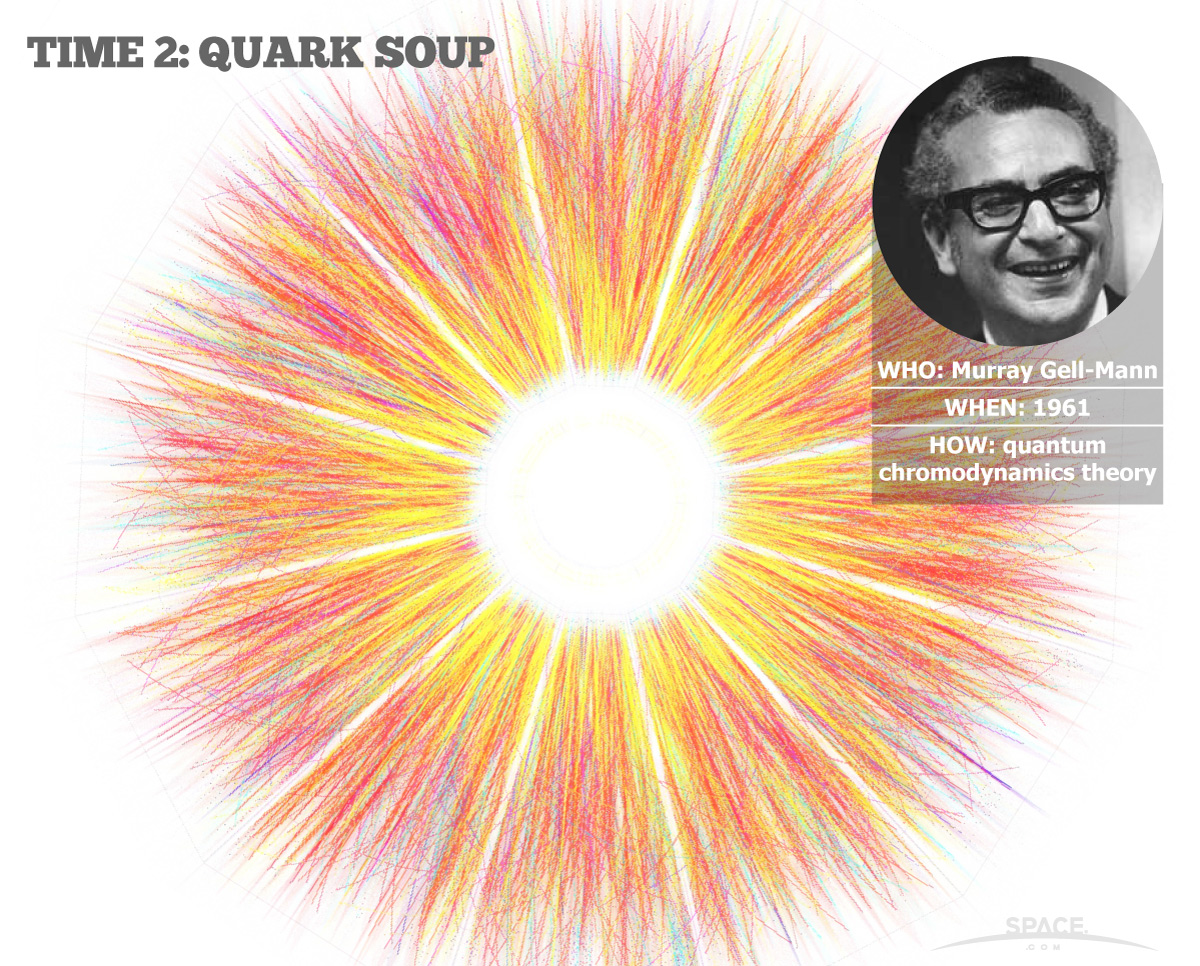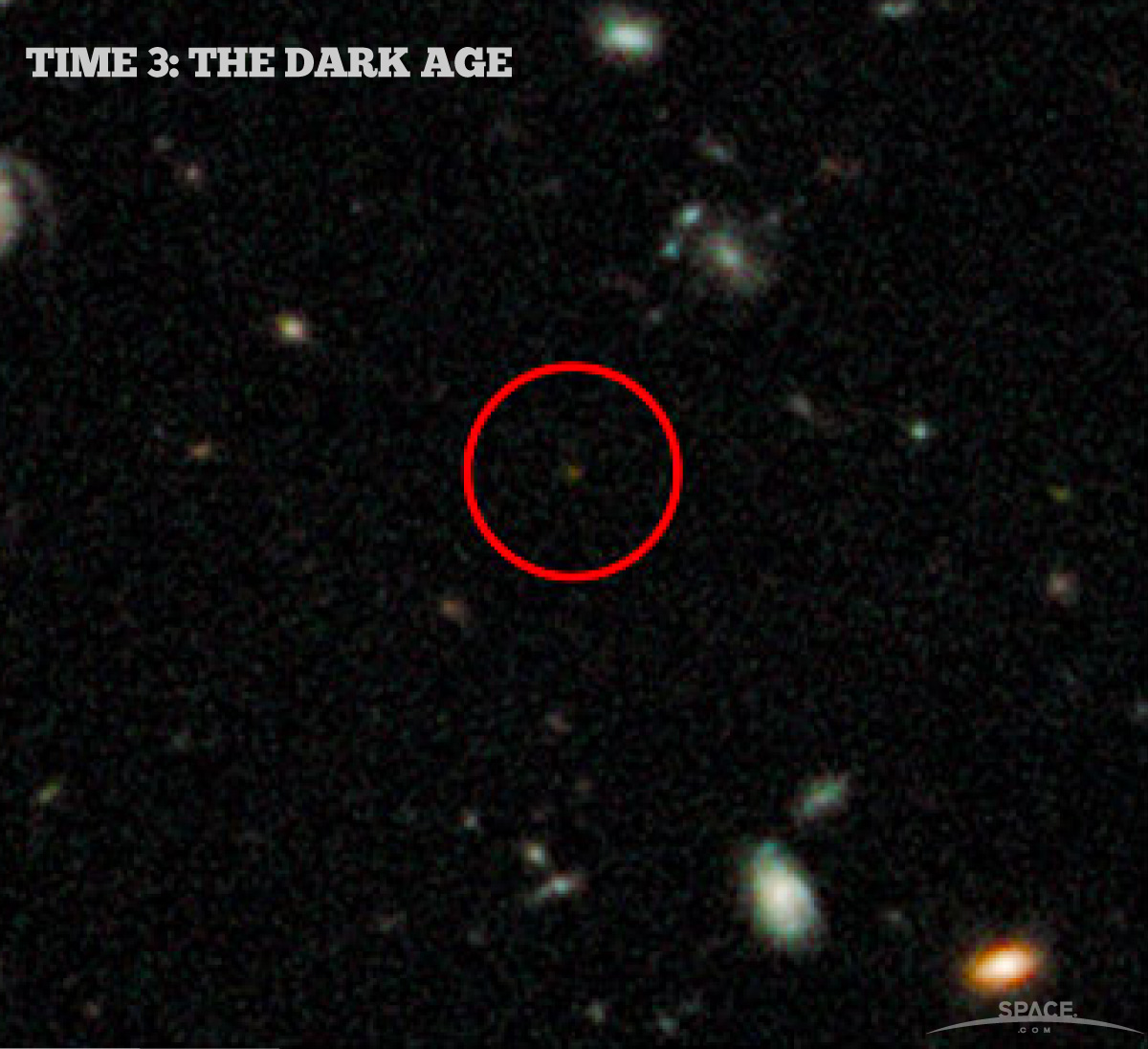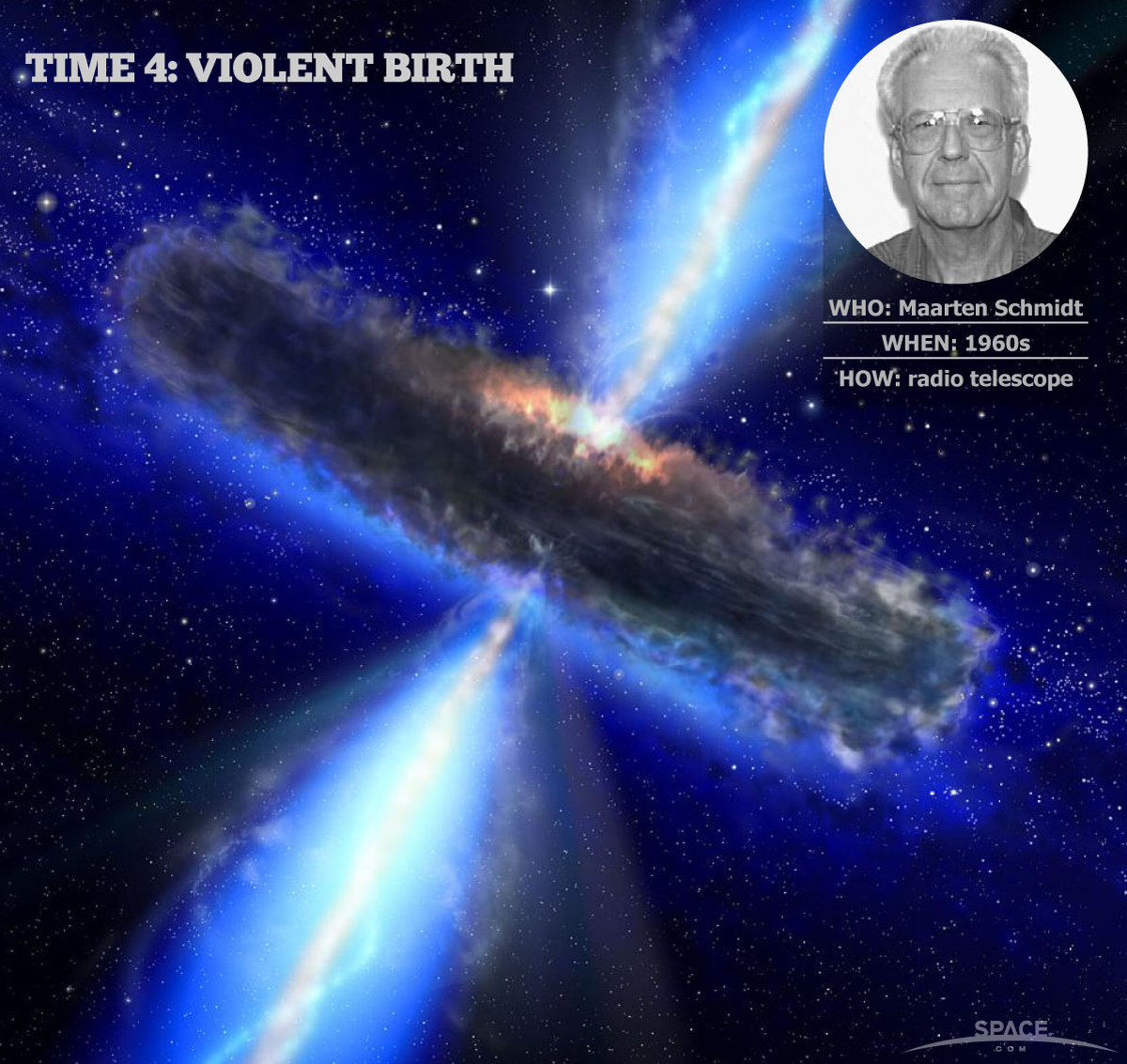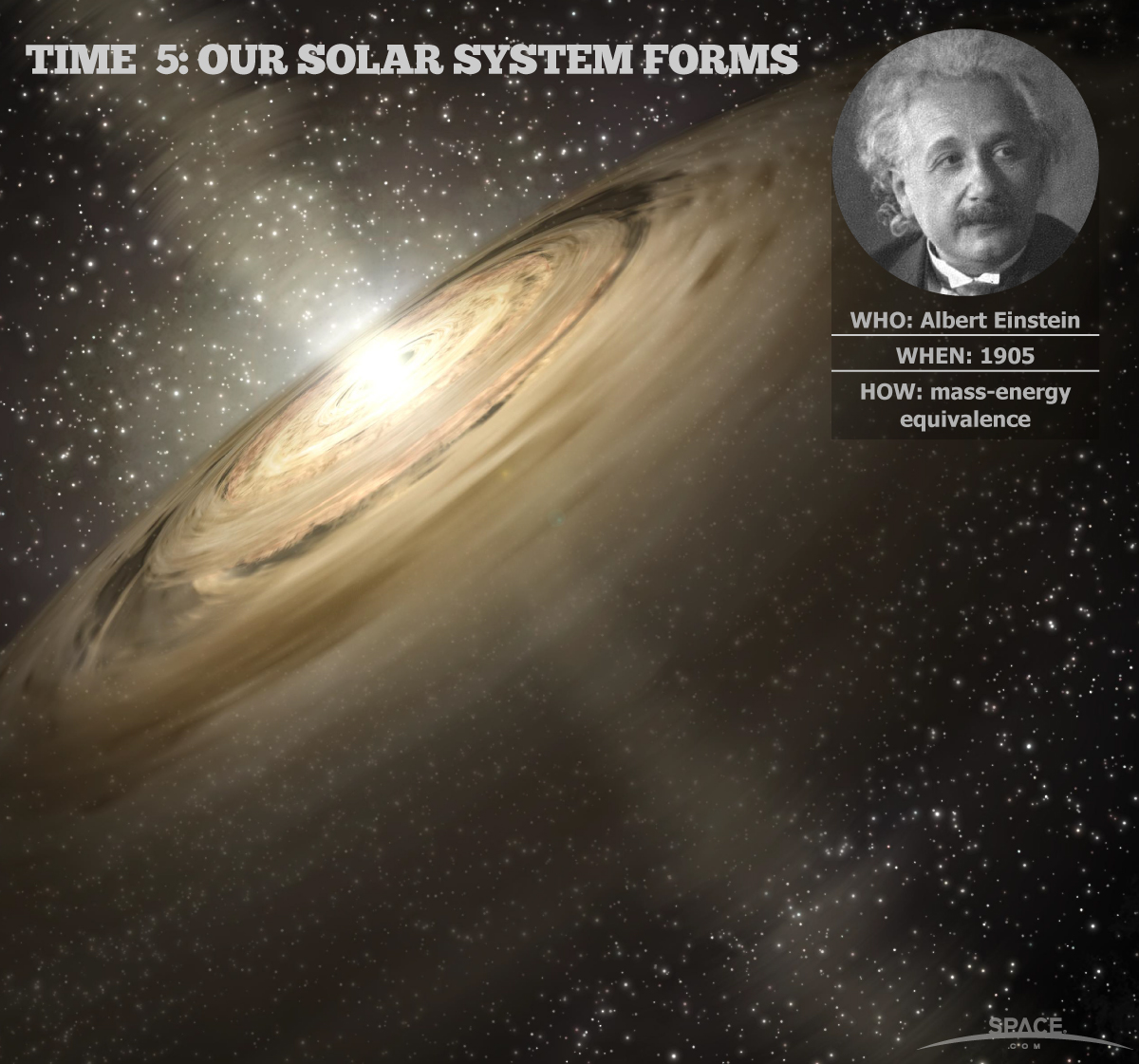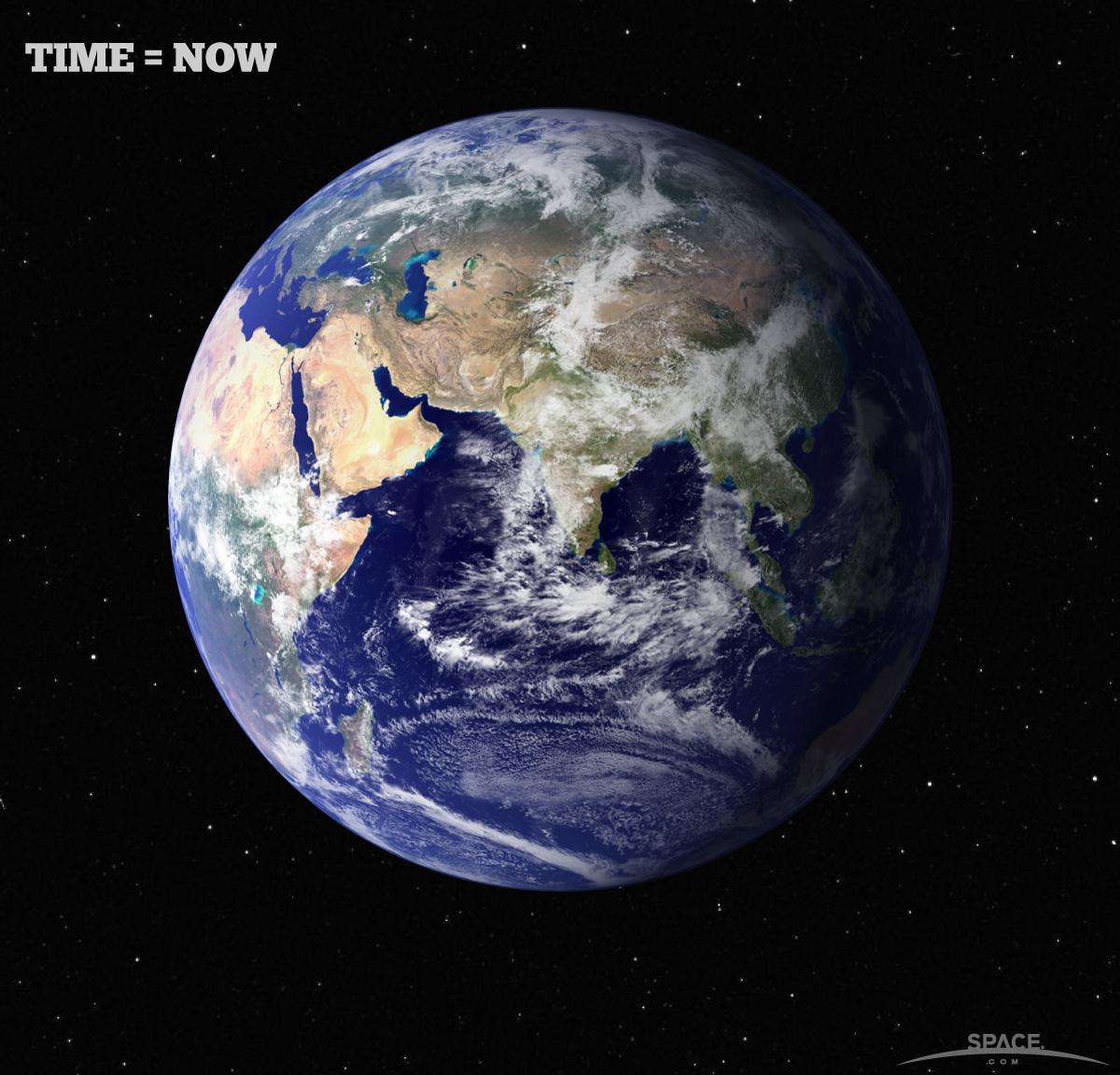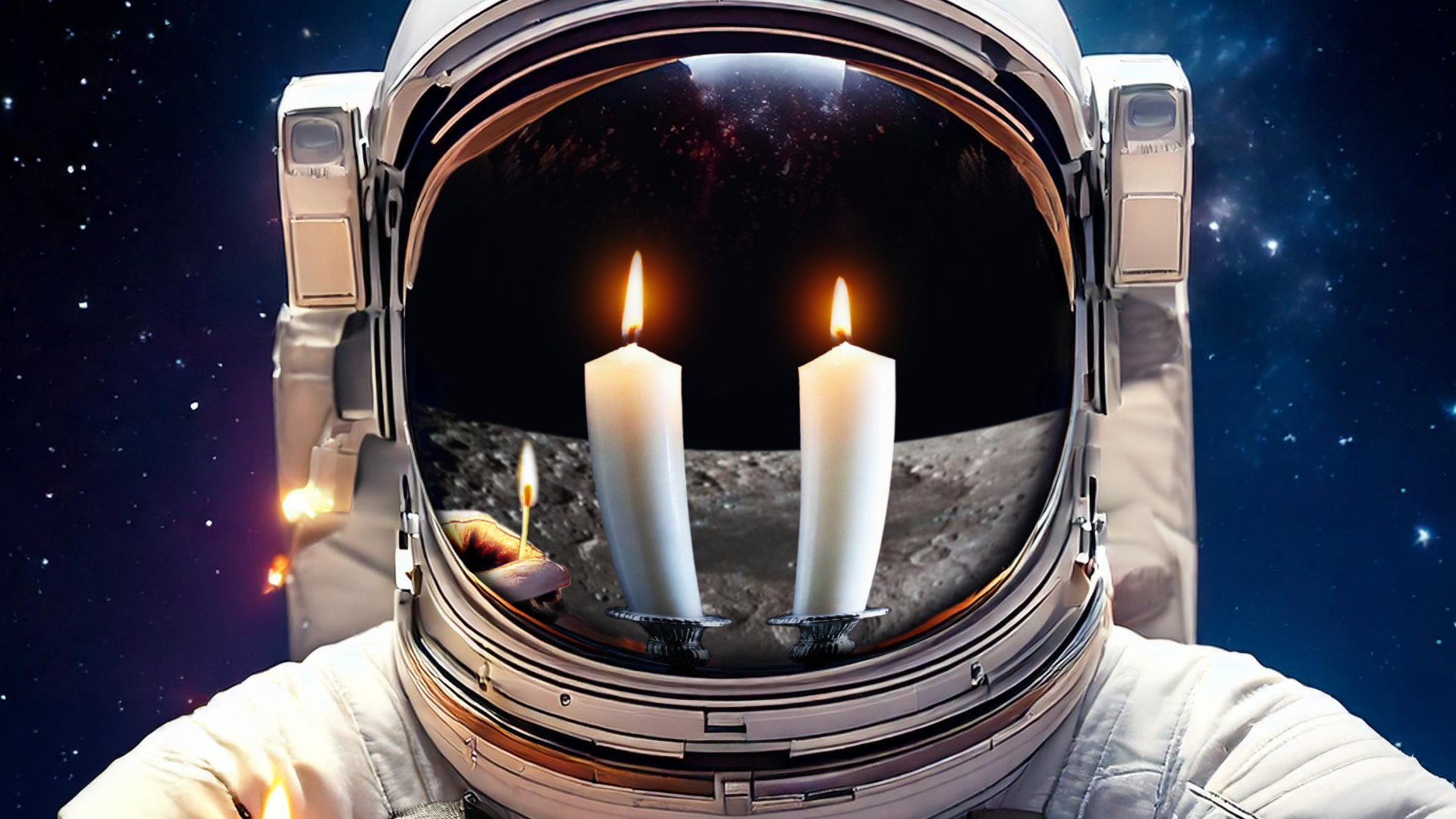The Big Bang: 13,750,000,000 years ago
In the early 20th century, Belgian astronomer and Catholic priest Georges Lemaitre calculated that the universe is expanding. By mathematically running the expansion backward, he theorized that everything in the universe once must have been compacted into a small, dense object, which he called "the primeval atom."
This atom exploded, an event that astronomer Fred Hoyle flippantly called "The Big Bang." The expansion of the universe explains why the light from distant objects is shifted toward the red end of the spectrum, a phenomenon called "redshift."
Just as the Doppler effect causes sound from moving vehicles to change pitch, redshift causes light from moving stars to change color as its wavelength gets stretched by expanding space. The farther an object is from Earth, the more the intervening space has expanded, and the more the object's light will have been shifted toward red.
American astronomer Edwin Hubble later proved with observations that redshift was indeed related to distance, and the correlation is now known as Hubble's law. NEXT: Universe's First Second >>
Earliest Fraction of a Second
Astronomers in the 1970s had a problem understanding the early universe. When they probed deep space with radio telescopes, they discovered a faint background glow of microwave radiation.
Variations in the density of the microwave signal were interpreted as variations in the density of matter in the early universe. Surprisingly, the background glow of radiation was found to be uniform in every direction. This seemed unreasonable; scientists expected to find regions of space with different densities and temperatures, because these regions seemed too far apart to have evolved together.
American physicist Alan Guth proposed an explanation in 1980. He theorized that in the tiny fraction of time just following the Big Bang, the universe underwent extremely rapid expansion. In a flash, its volume increased by a factor of 10^78 (the number 10 followed by 78 zeroes). Almost immediately the universe cooled slightly and the event, called "inflation," was over.
The inflationary model explains why the universe appears uniform in all directions: Everything in it evolved together before inflation. It has other staggering implications, too: The part of space that we can see must be just a tiny patch in what must be a vast universe that we can never directly detect. NEXT: The First Three Minutes >>
0.001 Second to 3 Minutes After the Big Bang
Following inflation, the cooling but still unimaginably hot universe experienced a phase transition. Elementary particles were created from a form of matter called quark-gluon plasma.
A thousandth of a second following the Big Bang, vast amounts of matter and antimatter annihilated each other (leaving behind the material that exists in the universe today). Within three minutes the temperature of the universe dropped to about a billion degrees, and atoms could begin to form, starting with the simplest elements: hydrogen and helium.
The quark-gluon plasma of the early universe is still theoretical and is thought to be possible because of a theory called Quantum Chromodynamics. American physicist Murray Gell-Mann was among the first to formulate this theory.
The basic nuclear particles – protons and neutrons – are thought to be made from still more-fundamental particles called "quarks," which are never found traveling alone except under very high temperatures like those that existed just after the Big Bang. Physicists are trying to re-create on Earth the plasma that is thought to have comprised the early universe; they are using particle accelerators to smash subatomic particles together at high energy. NEXT: 3 Minutes to 379,000 Years >>
3 Minutes to 379,000 Years After the Big Bang
During this period, the early universe was hot and opaque. Starting at about 379,000 years after the Big Bang, the universe cooled enough so that light could separate from matter and travel freely. In short, the universe became transparent. This photo shows galaxy UDFy-38135539, one of the oldest and earliest galaxies yet found, appearing just after the Dark Age at about 480 million years after the Big Bang. NEXT: The First Billion Years >>
150 Million to 1 Billion Years After the Big Bang
In the 1960s Dutch astronomer Maarten Schmidt identified strange deep-space objects, very bright in radio wavelengths, which he termed "quasi-stellar radio sources."
U.S. astrophysicist Hong-Yee Chiu named the phenomena "quasars." Quasars had been picked up in the 1950s by large Earth-bound antennas called radio telescopes. When Schmidt measured the quasars' distance by studying the redshift of their spectrum, what he found was astonishing. The objects were billions of light-years away, and therefore had to be incredibly bright to be detected on Earth.
Later study showed that the mysterious quasars were active galaxies that had formed very early in the history of the universe. Gravitational collapse had caused matter to coalesce, eventually forming giant black holes with the mass of billions of suns.
A black hole sits at the center of a quasar, collecting matter and heating it to become high-temperature plasma that can be shot out into huge jets traveling close to the speed of light.that light could separate from matter and travel freely. In short, the universe became transparent.
This photo shows galaxy UDFy-38135539, one of the oldest and earliest galaxies yet found, appearing just after the Dark Age at about 480 million years after the Big Bang. NEXT: The Universe, Age 9 Billion Years >>
9 Billion Years After the Big Bang
The earliest stars formed when the universe was only 300 million years old. They were short-lived and supermassive, composed mostly of hydrogen and helium and containing no metals.
These first stars exploded into supernovas, and successive generations were created from the remains of the earlier suns. Analysis of the spectrum of the light from our sun shows that it is rich in metals, and therefore could have been created only following many generations of stars.
The sun's power source was a mystery until German physicist Albert Einstein worked out in 1905 that matter could be converted into energy, with his famous equation E=mc^2. In 1920 British astrophysicist Sir Arthur Eddington suggested that the sun might be powered by a nuclear fusion reactor, generating heat and light energy by converting hydrogen into helium.
Study of the spectrum of light from the sun and other stars led to a confirmation that nuclear fusion processes created the atomic elements from which our world is composed. NEXT: The Modern Universe >>
The Universe Now
Scientists have put together an impressive picture of the origin, history and nature of our universe. However, we do not know everything there is to know. Many open questions remain in the fields of physics and cosmology.
For example:
What is dark matter, and does it actually exist?
Why does the universe's expansion seem to be accelerating?
What is the actual shape and size of the universe, and how many dimensions does it have?
What is the ultimate fate of the universe?
SOURCES: NASA, Hubble Space Telescope Science Institute, "Space, Our Final Frontier" by John Gribbin (2001), "The Forgotten Revolution: How Science Was Born in 300 BC and Why It Had to Be Reborn" by Lucio Russo (2004), "The Inflationary Universe" by Alan H. Guth (1997)
Breaking space news, the latest updates on rocket launches, skywatching events and more!

Karl's association with Space.com goes back to 2000, when he was hired to produce interactive Flash graphics. From 2010 to 2016, Karl worked as an infographics specialist across all editorial properties of Purch (formerly known as TechMediaNetwork). Before joining Space.com, Karl spent 11 years at the New York headquarters of The Associated Press, creating news graphics for use around the world in newspapers and on the web. He has a degree in graphic design from Louisiana State University and now works as a freelance graphic designer in New York City.
